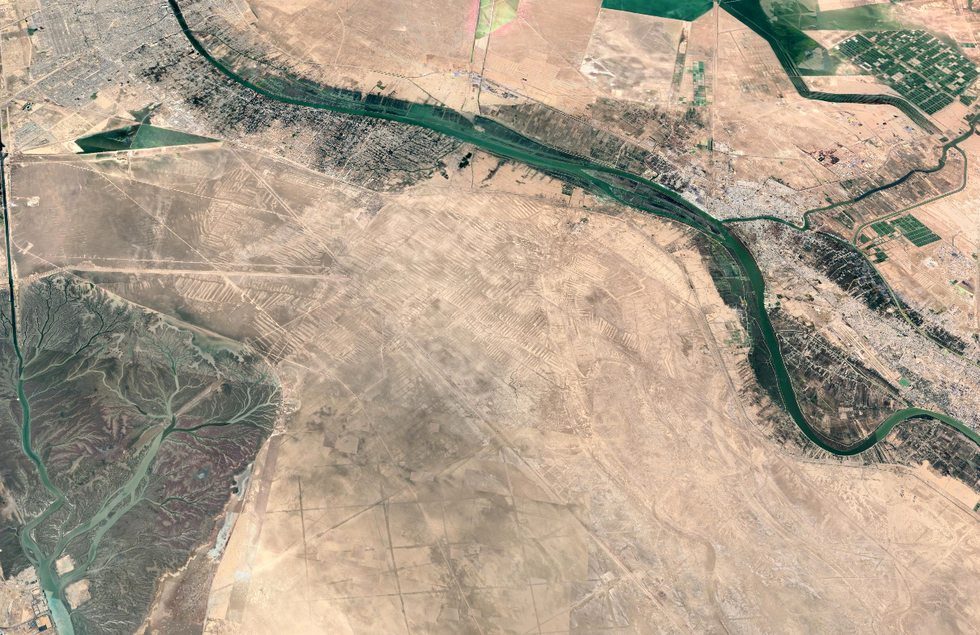Archaeology discovery as mystery behind vast network of underground canals FINALLY solved

Researchers have shed light on more than 7,000 massive ridges and canals across the 'cradle of civilisation'
Don't Miss
Most Read
Latest
Archaeologists have solved a mystery behind an extensive network of earthen structures in Southern Iraq.
Long thought to be the remains of a large-scale agricultural system, researchers have revealed they were likely constructed by slaves over several centuries.
An international research team analysed modern-day and 1960s images of more than 7,000 massive ridges and canals across the Shatt al-Arab flood plain, dating their construction from the late ninth century onwards.
The findings, published in the journal Antiquity, suggest the structures were built during and after the period of the Zanj rebellion in 869 AD.

An international research team analysed modern-day and 1960s images of more than 7,000 massive ridges and canals across the Shatt al-Arab flood plain (pictured)
|Researchers said the sheer scale of the network hints at an "investment of human labour on a grand scale".
The slave labourers, known as the Zanj, were brought from the East African Swahili coast, though their precise origins remain the subject of debate.
They then staged a major uprising against the Abbasid state in 869 AD that lasted until 883 AD.
Using radiocarbon and optically stimulated luminescence dating on four ridge crests, researchers discovered the structures were built between the late ninth and mid-13th centuries - proving that slave labour continued in the region for several centuries following the famous rebellion.
MORE ARCHAEOLOGY BREAKTHROUGHS:
- Scientists discover mysterious 'ghost lineage' after unearthing 7,100-year-old skeleton in China
- Archaeology breakthrough as over 100 structures linked to ancient South American culture discovered
- Centuries-old cold case finally solved after researchers identify mysterious remains on Jersey shore
- Owner of ancient Egyptian tomb finally identified FIVE DECADES later

The Zanj staged a major uprising against the Abbasid state in 869 AD that lasted until 883 AD
|WIKIMEDIA COMMONS
The team included researchers from Durham and Newcastle universities, Radboud University in the Netherlands, and the universities of Al-Qadisiyah and Basra in Iraq.
And their discovery holds particular significance for documenting the heritage of Iraq's minority communities.
"Their history has not been actually written or documented very well in our history," said Jaafar Jotheri, a professor of archaeology at the University of Al-Qadisiyah.
Many descendants of the slaves now reside in the southern port city of Basra - but researchers say their historical contributions have been largely overlooked.
"So that's why this (finding) is very important, and what is next actually is to protect at least some of these huge structures for future work. It is minority heritage," Jotheri added.
The research marks a significant moment in Iraqi archaeology, which has experienced a revival following decades of war which halted excavations and sparked in widespread looting.
Thousands of stolen artefacts have been repatriated in recent years as archaeological work resumes in the country often called the "cradle of civilisation".
Researchers also revealed that "these features were in use for a substantially longer period than previously assumed".
"As such, they represent an important piece of Iraqi landscape heritage," they added.








